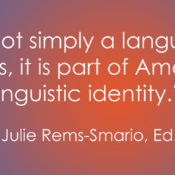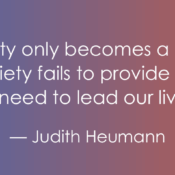
The First Three Steps to Building an Effective Communication Access Policy
So you want to build an effective communication access policy – a plan to help you stay compliant, reduce risk and improve the overall experiences of Deaf and Hard of Hearing individuals. Where do you get started?
It is critical to incorporate necessary guidelines and procedures to adhere to the letter of the law and recommended standards. However, there are three important components that should be addressed first when building your policy.
After all, in order for patients to keep coming back, they need to know what to expect every time they interact with your employees, including during intake, medical testing and hospital discharge. To this end, will they promptly receive sign language interpreters or will they be forced to lip-read or use paper and pen to interact with staff members?
Whether you’re writing a new communication access policy or want to revamp your existing one, these critical steps will help develop the necessary foundation for your policy.
Know Your Purpose
The first step to building an effective communication access policy is recognizing why you’re doing it.
Is it simply to achieve compliance and reduce risk? Or is it to improve patient throughput, reduce patient re-admissions, and/or manage staff efficiency?
This will help you define the objective and scope of the initiative, as well as who should be involved with the project.
Define Patient Experience
The Beryl Institute defines patient experience as “the sum of all interactions, shaped by an organization's culture, that influence patient perceptions across the continuum of care.” Defining patient experience is a critical component in moving toward patient-centered care as it allows medical care providers to self-assess whether they are providing care that is respectful of and responsive to individual patient preferences, needs and values.
To this end, patient experience and patient satisfaction are often used interchangeably. However, patient satisfaction refers to whether the patient’s expectations were fulfilled. Consequently, not every individual has the same expectations of a medical provider and care received. As communication with health care providers is an integral component of medical care, it is critical to build a comprehensive communication access policy that reinforces your hospital’s expectations and ensures each patient is satisfied with their experience throughout the entire care continuum.
Understand Deaf and Hard of Hearing Individuals’ Perspective
While your hospital may receive complaints, there may be negative experiences that are falling through the cracks. For example, your complaint-handling systems may not be accessible to Deaf and Hard of Hearing patients and companions due to the lack of effective communication (e.g., no sign language interpreters). Furthermore, understanding patient experience surveys may be a challenge for Deaf and Hard of Hearing individuals due to limited English proficiency.
To effectively address negative experiences or perspectives of your health care facility, you need to work with someone who innately understands and can communicate with the Deaf and Hard of Hearing community to identify common threads amongst patient complaints and/or concerns. These individuals must also be able to translate concerns into corrective actions to consider implementing in communication access policies to improve patient and staff relationships and protect your facility’s reputation.
Recommended Next Steps
Our clients come to us to help them understand and capture Deaf and Hard of Hearing individuals’ needs, experiences and challenges. We do this by conducting focus groups, 1:1 interviews and surveys (using American Sign Language) with Deaf and Hard of Hearing patients and companions. We also reference previously established communication access policies and procedures to identify gaps and make recommendations.
Contact us today to make sure your communication access policy is proactive in ensuring you provide effective communication to your Deaf and Hard of Hearing patients and companions.



